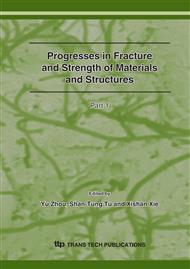p.2436
p.2441
p.2445
p.2449
p.2455
p.2459
p.2463
p.2467
p.2471
Coupling Analysis of Fluid Film and Thermal Deformation of Sealing Members in Spiral Groove Mechanical Seal
Abstract:
The thermo-hydrodynamic effect in the spiral groove mechanical seal was investigated. The coupling analysis of the fluid film and the thermal deformation of sealing rings was carried out, the separation angle obtained, and the shape of the gap between the two deformed end faces determined. The results indicate that the increase of the temperature of the fluid film and the thermal deformation of the sealing rings cause the increase of the leakage rate. There exists a critical rotating speed, when the rotating speed is lower than the critical speed, the bearing force increases with the increase of the rotating speed, and once the rotating speed is higher than the critical speed, the bearing force decreases reversely. The thermal deformation weakens the hydrodynamic effect of the spiral groove mechanical seals.
Info:
Periodical:
Pages:
2455-2458
Citation:
Online since:
September 2007
Authors:
Price:
Сopyright:
© 2007 Trans Tech Publications Ltd. All Rights Reserved
Share:
Citation:


